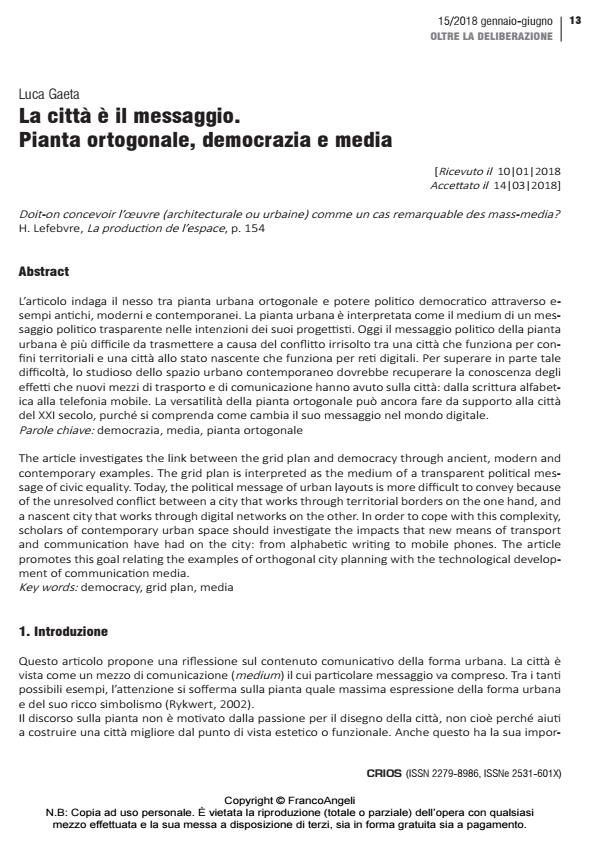La città è il messaggio. Pianta ortogonale, democrazia e media
Journal title CRIOS
Author/s Luca Gaeta
Publishing Year 2018 Issue 2018/15
Language Italian Pages 12 P. 13-24 File size 356 KB
DOI 10.3280/CRIOS2018-015002
DOI is like a bar code for intellectual property: to have more infomation
click here
Below, you can see the article first page
If you want to buy this article in PDF format, you can do it, following the instructions to buy download credits

FrancoAngeli is member of Publishers International Linking Association, Inc (PILA), a not-for-profit association which run the CrossRef service enabling links to and from online scholarly content.
The article investigates the link between the grid plan and democracy through ancient, modern and contemporary examples. The grid plan is interpreted as the medium of a transparent political message of civic equality. Today, the political message of urban layouts is more difficult to convey because of the unresolved conflict between a city that works through territorial borders on the one hand, and a nascent city that works through digital networks on the other. In order to cope with this complexity, scholars of contemporary urban space should investigate the impacts that new means of transport and communication have had on the city: from alphabetic writing to mobile phones. The article promotes this goal relating the examples of orthogonal city planning with the technological development of communication media.
Keywords: Democracy, grid plan, media
- Gli ordinamenti spaziali dell'epoca digitale: oltre il dualismo Luca Gaeta, in CRIOS 18/2020 pp.37
DOI: 10.3280/CRIOS2019-018004
Luca Gaeta, La città è il messaggio. Pianta ortogonale, democrazia e media in "CRIOS" 15/2018, pp 13-24, DOI: 10.3280/CRIOS2018-015002